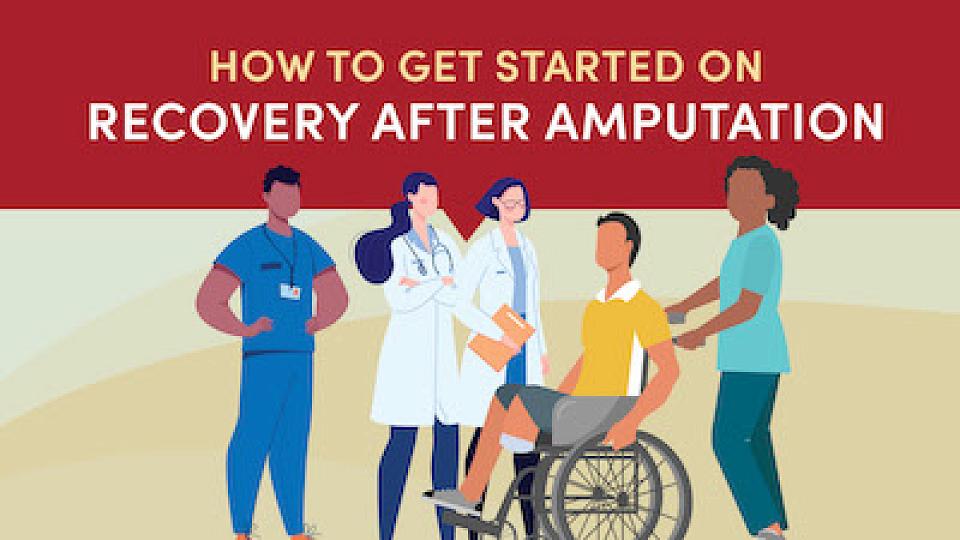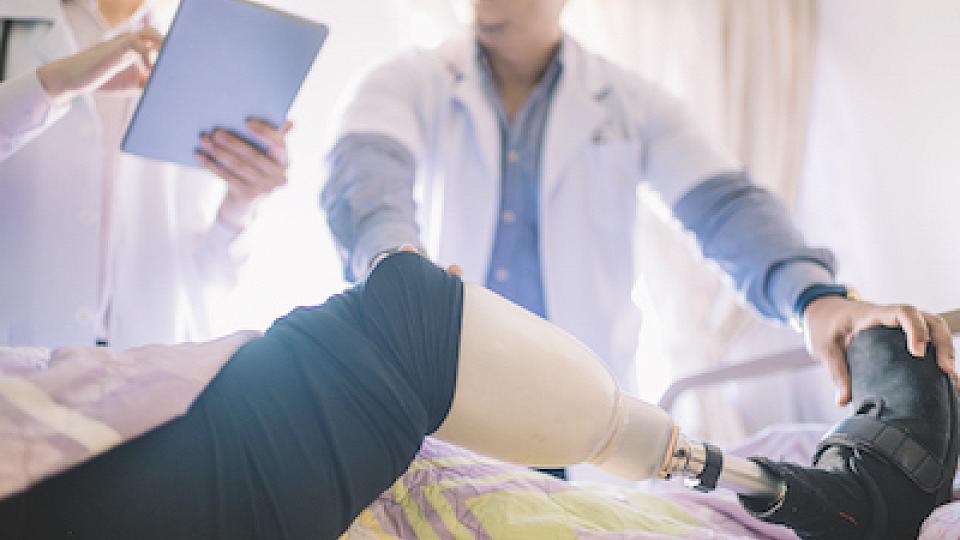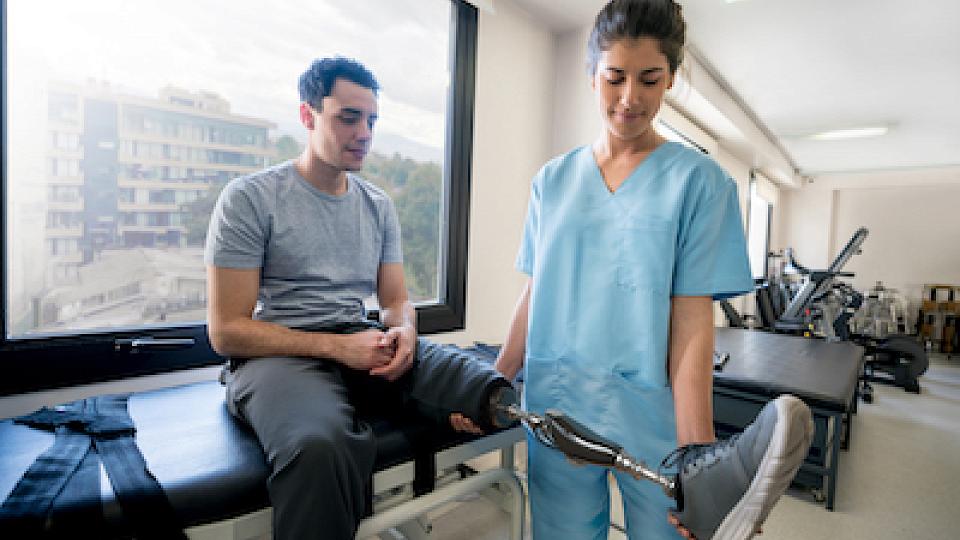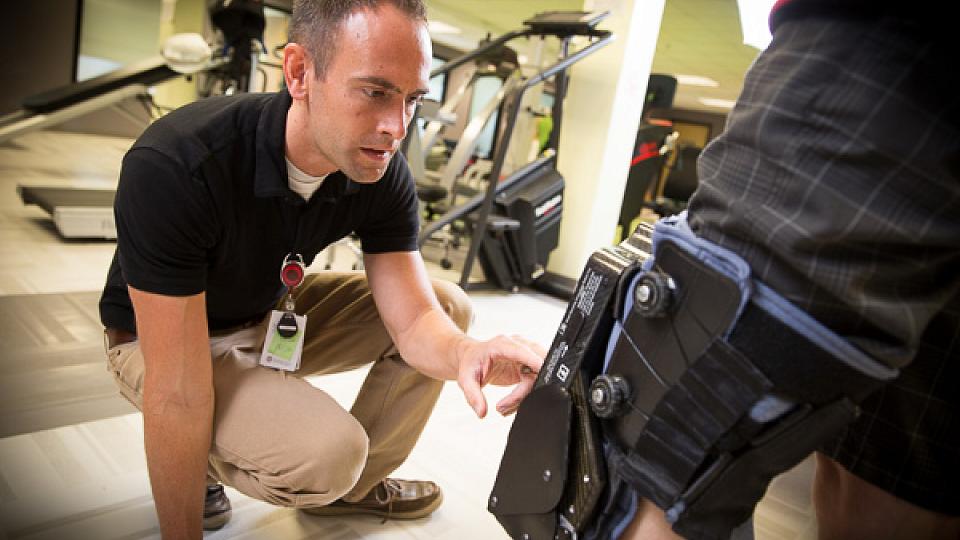
After losing a limb, it's important to work with a team of amputation rehabilitation specialists to prepare for the road ahead. Here are some tips to get you started.

Build Your Team
Be sure to build your team of medical experts who can help you throughout the entire process. Your team may include a rehab doctor, physical therapist, prosthetist, occupational therapist, and a rehabilitation psychologist.
Get Hip with It
When it comes to balance and stability, it’s all in the hips. Modified versions of the following exercises (prescribed by your provider) help to improve walking and overall mobility.
Bird Dog: Starting on all fours, tighten your abs, keep your lower back still, and raise one arm forward while lifting your opposite leg straight backward, hold, then lower.
Straight-Leg Hip Extension: Lie on your stomach, tighten your glutes, and lift your amputated leg straight off the table, hold, then lower.
Single Leg Bridge: Lie on your back (sound leg bent, amputated leg straight), tighten your abs, and lift your hips, hold, then lower.
Side-Lying Hip Abduction: Lie on your side with your body in a straight line, lift your amputated leg up toward the ceiling, hold, then lower.
Balance It Out
In addition to incorporating modified versions of core exercises into your routine, it’s important to include standing balance techniques to strengthen key muscle groups.
Foot Tap: Begin by standing straight on your prosthetic limb and tap a stair or step stool with your other foot while focusing on your balance.
Reach Out for Help
Remember that the mind and body are connected. Be sure to connect with a rehabilitation specialist and support networks to navigate the grief and loss after losing a limb.
Craig H. Neilsen Rehabilitation Hospital
Our hospital was built for patients—of all capabilities—to interact with their surroundings in real-time. Our smart technology enables patients greater control of the space around them and their recovery. Come experience it for yourself.

Mirror Therapy to Treat Phantom Limb Pain
After an amputation, sensations or pain where the removed limb once was can significantly interfere with a person's quality of life. Colby Hansen, MD, and Spencer Thompson, DPT, discuss how consistent therapy with a simple mirror can help to alleviate the condition.





